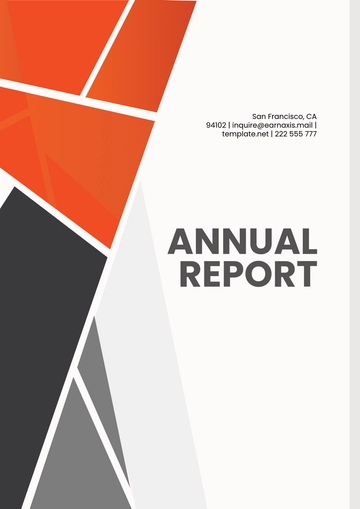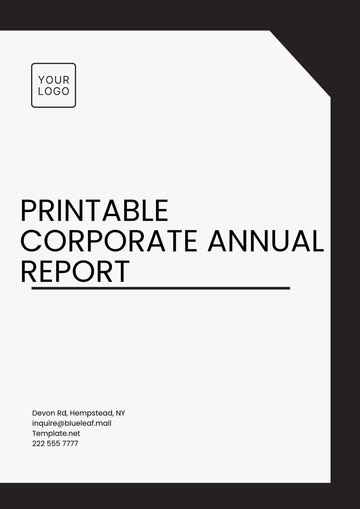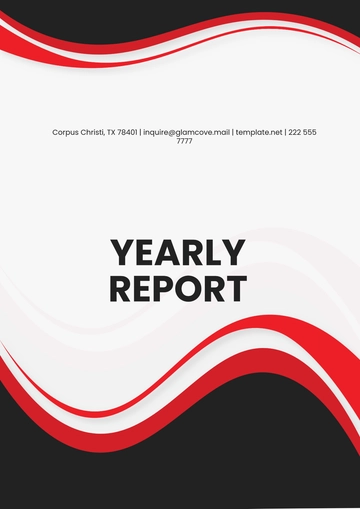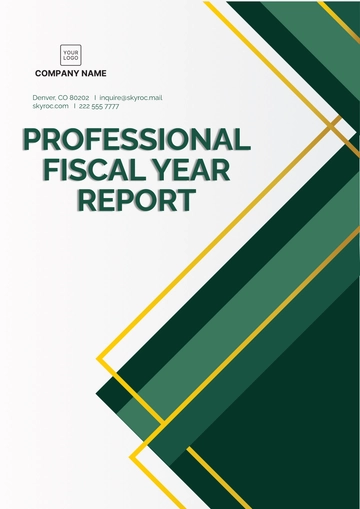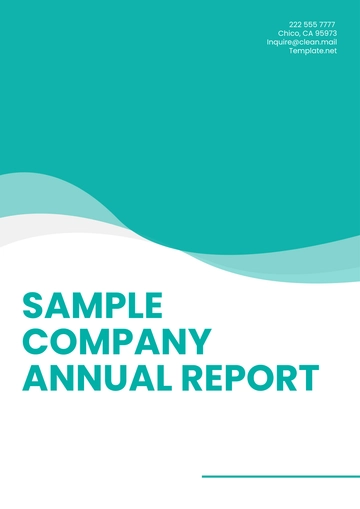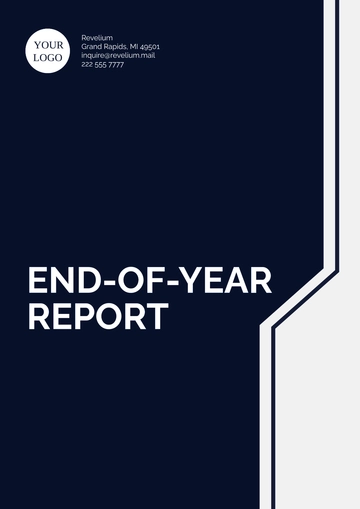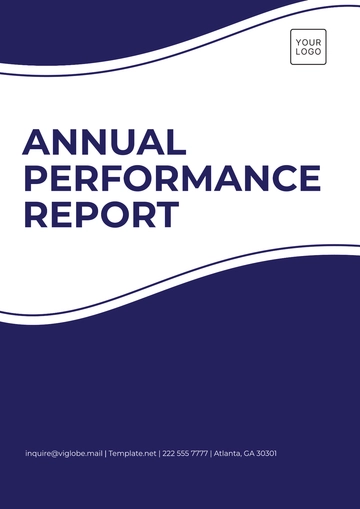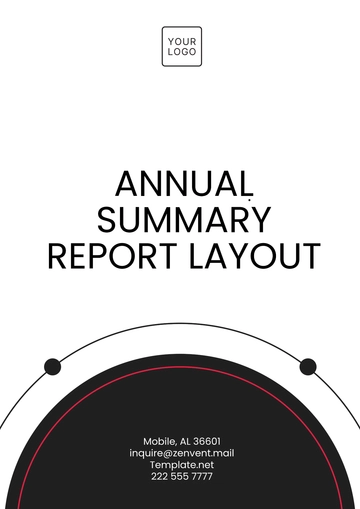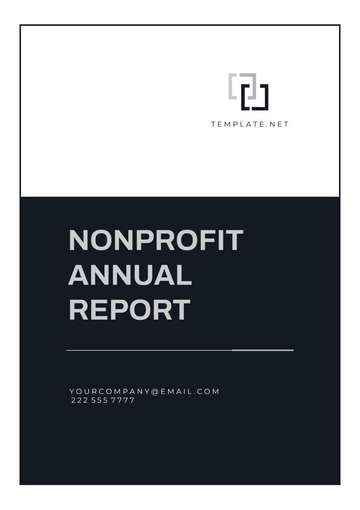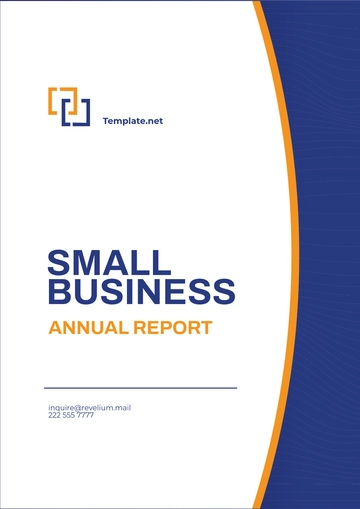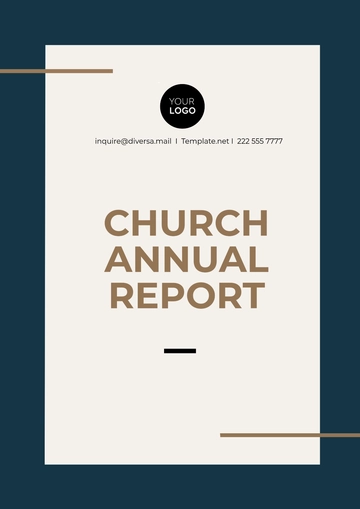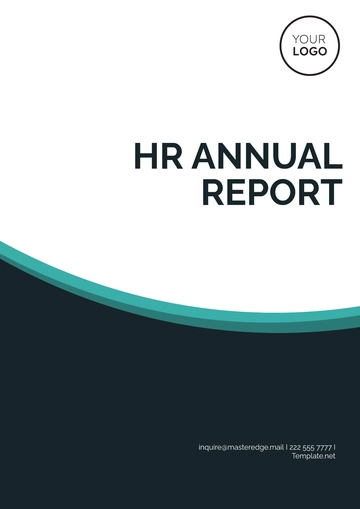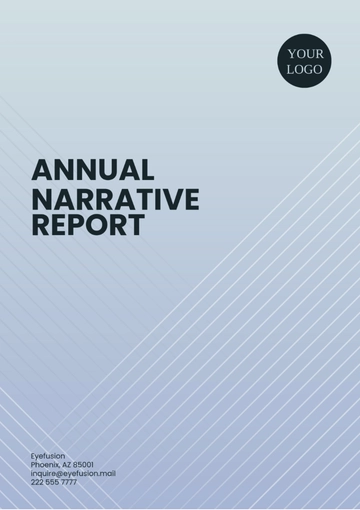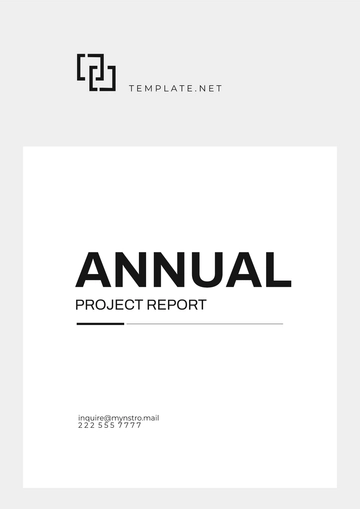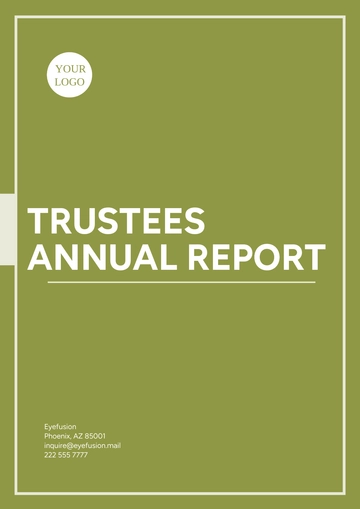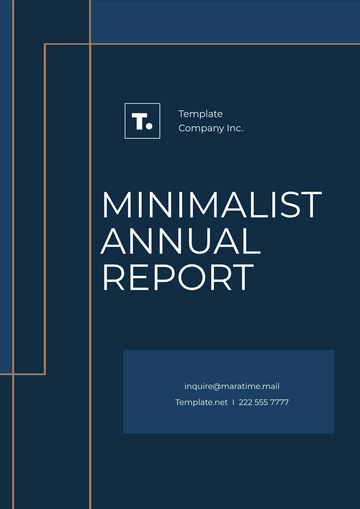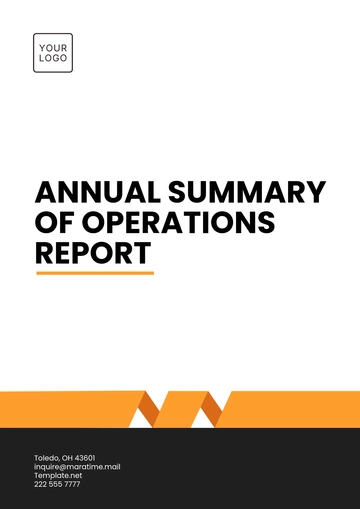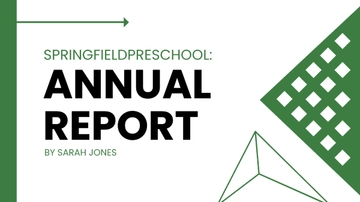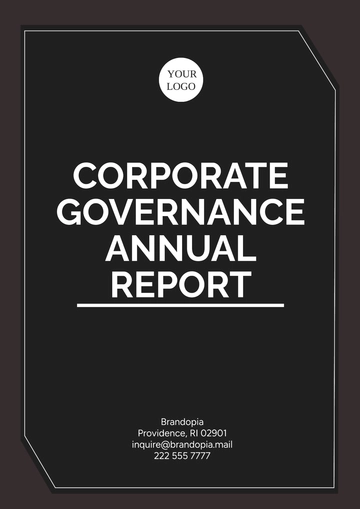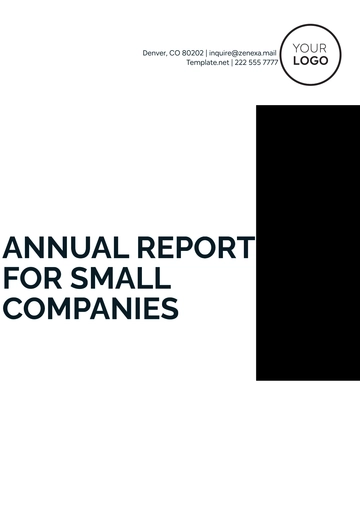Free Real Estate Green Building Annual Report
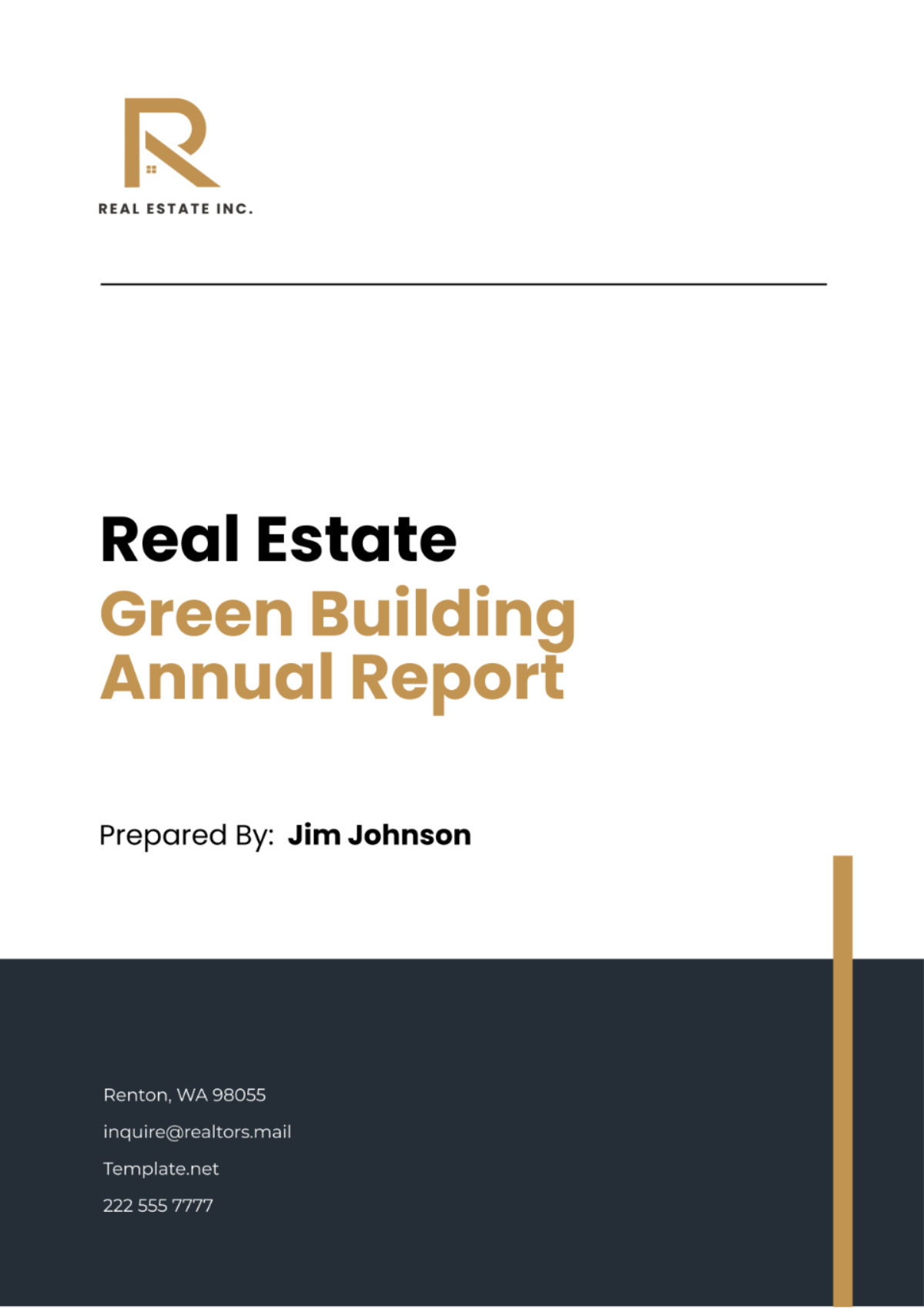
I. Executive Summary
In a year marked by unprecedented challenges and opportunities, [Your Company Name] has steadfastly pursued its commitment to sustainability and green building practices. This report encapsulates our efforts, achievements, and the path forward as we integrate sustainability into the core of our real estate operations.
Throughout the year, [Your Company Name] successfully completed five major green building projects, each achieving LEED Gold certification or higher. These projects not only represent our dedication to environmental stewardship but also our commitment to providing healthier, more sustainable spaces for our tenants and their communities. Our ongoing and planned projects promise to elevate this commitment to new heights.
As we look to the future, [Your Company Name] is poised to continue leading the way in sustainable real estate development, with ambitious goals that aim to not only reduce our environmental footprint but also set new industry standards for green building.
II. Introduction
Sustainability and green building practices are no longer optional in the real estate industry; they are essential. At [Your Company Name], we believe that our responsibility extends beyond just constructing and managing properties. We are committed to leading the charge in sustainable development, creating spaces that are environmentally responsible and resource-efficient throughout their life-cycle.
This commitment is driven by a recognition of the critical challenges facing our planet and a firm belief in doing our part to foster a sustainable future. Our green building initiatives are guided by global standards and certifications, such as Leadership in Energy and Environmental Design (LEED) and Building Research Establishment Environmental Assessment Method (BREEAM), ensuring that we not only meet but exceed the expectations for sustainability in the built environment.
III. Market Overview
The global green building market has witnessed significant growth over the past decade, driven by increasing awareness of climate change and a growing demand for sustainable and energy-efficient buildings. In [Year], the market size reached $[Amount] billion, with projections indicating a compound annual growth rate (CAGR) of 75% over the next five years.
[Your Company Name] has keenly observed these trends, adapting our strategies to not only stay ahead of market demands but also to influence positive changes within the industry. Our green building initiatives have contributed to an increase in property values, with sustainable properties showing a premium of 80% compared to traditional buildings. This trend underscores the financial viability and attractiveness of investing in green buildings.
IV. Company’s Green Building Initiatives
A. Completed Projects
Project Name | Size (sq ft) | Certification Level | Key Features |
|---|---|---|---|
Eco Tower | 500,000 | LEED Gold | Solar panels, green roof, water recycling |
Green Horizon | 300,000 | LEED Platinum | High-efficiency HVAC, LED lighting |
Sustainable Plaza | 450,000 | BREEAM Excellent | Rainwater harvesting, natural lighting |
For instance, Eco Tower incorporates a state-of-the-art solar panel system capable of generating 200 kW of electricity annually, significantly reducing the building's reliance on non-renewable energy sources. This initiative alone has resulted in an annual energy cost saving of approximately $[Amount], demonstrating the financial viability of sustainable investments.
B. Ongoing Projects
[Your Company Name] is currently developing several exciting green building projects, including:
Verde Residences: A residential complex targeting LEED Silver certification with features like electric vehicle charging stations and energy-efficient appliances.
Eco Commercial Hub: A mixed-use development aiming for BREEAM Outstanding certification, focusing on zero-carbon operations and biodiversity enhancement.
C. Planned Projects
Looking ahead, [Your Company Name] is in the planning stages for [Project Name], a pioneering project that will feature cutting-edge sustainable technologies such as biophilic design principles and net-zero water usage. This project underscores our commitment to pushing the boundaries of green building innovation.
V. Sustainability Performance
A. Energy Efficiency
Our green building projects have collectively achieved a reduction in energy consumption by approximately 50% compared to conventional buildings. This translates into significant cost savings for our tenants and contributes to our overall sustainability goals.
B. Water Conservation
Through initiatives such as rainwater harvesting and low-flow fixtures, [Your Company Name] has reduced water usage by over 1 million gallons across all properties, demonstrating our commitment to preserving vital water resources.
C. Waste Reduction and Recycling
Our comprehensive waste management and recycling programs have diverted over 2,500 tons of waste from landfills this year alone, reflecting our dedication to reducing the environmental impact of our operations.
VI. Financial Impact
Investing in green buildings has proven to be financially beneficial for [Your Company Name]. The initial investment in sustainable design and construction is offset by substantial long-term savings and benefits, including lower utility costs, enhanced tenant satisfaction, and increased property values. Here's an overview of the financial impact of our green building initiatives:
Energy Savings: On average, our green buildings consume 30% less energy than conventional buildings, translating into annual savings of approximately $[Amount] per square foot.
Water Savings: Water-efficient fixtures and rainwater harvesting systems have reduced water bills by up to 50% in some properties, amounting to annual savings of $[Amount].
Increased Property Value: Green certifications have enhanced the market value of our properties by an average of 7%, making them more attractive to investors and tenants alike.
Government Incentives: Our projects have qualified for various government incentives for green building, including tax credits and rebates, totaling $[Amount] last year.
These financial benefits underscore the viability of sustainable real estate development not just as an environmental or ethical choice, but as a sound financial strategy.
VII. Challenges and Solutions
The journey towards sustainability is not without its challenges. However, [Your Company Name] has faced these obstacles head-on, developing innovative solutions to advance our green building initiatives:
High Upfront Costs: The initial investment required for green building technologies and materials is often higher than that for traditional construction. We've addressed this by leveraging government incentives, engaging in partnerships for bulk purchasing, and focusing on the long-term ROI of sustainable features.
Regulatory Hurdles: Navigating the complex landscape of building regulations and green certifications can be daunting. Our approach involves early engagement with regulatory bodies, continuous education and training for our teams, and collaboration with experienced consultants to ensure compliance and certification success.
Market Perception: Initially, there was skepticism regarding the market demand for green buildings. To combat this, [Your Company Name] has invested in extensive market research, tenant education, and marketing campaigns highlighting the benefits of sustainable living and working spaces.
VIII. Stakeholder Engagement
Engaging our stakeholders — from investors to tenants to the community at large — is a cornerstone of our sustainability strategy. We've implemented several initiatives to foster this engagement:
Initiative | Details |
|---|---|
Tenant Sustainability Programs | Programs designed to encourage tenants to adopt green practices, such as recycling and energy conservation, have been highly successful. These programs include educational workshops, sustainability challenges, and incentives for participation. |
Community Outreach | [Your Company Name] actively participates in community sustainability efforts, including local clean-up drives, sponsoring green initiatives, and hosting public seminars on sustainability topics. |
Investor Communications | Regular updates and transparent reporting on our sustainability goals and achievements keep our investors informed and engaged with our green building strategy. |
IX. Future Outlook and Goals
As we look ahead, [Your Company Name] is committed to further advancing our leadership in sustainable real estate development. Our goals for the coming years include:
Achieving net-zero carbon emissions across all our properties by [Year].
Expanding our portfolio of LEED Platinum-certified buildings by 50%.
Implementing innovative green technologies, such as AI-driven energy management systems and biophilic design elements, in upcoming projects.
Increasing stakeholder engagement through new sustainability programs and initiatives.
X. Conclusion
This report reflects [Your Company Name]'s unwavering commitment to sustainability and green building practices. Our achievements to date demonstrate the viability and financial soundness of this approach, and our future plans highlight our ambition to continue leading the way in sustainable real estate development. We believe that our efforts not only contribute to a healthier planet but also create value for our stakeholders, proving that sustainability and success go hand in hand.
- 100% Customizable, free editor
- Access 1 Million+ Templates, photo’s & graphics
- Download or share as a template
- Click and replace photos, graphics, text, backgrounds
- Resize, crop, AI write & more
- Access advanced editor
Showcase sustainable success with Template.net's Real Estate Green Building Annual Report Template. Crafted for eco-friendly developments, this template is fully customizable and editable through our Ai Editor Tool. Highlight achievements, sustainability initiatives, and future goals with ease, making your report as green as your buildings. Perfect for eco-conscious real estate professionals, exclusively from Template.net.
You may also like
- Sales Report
- Daily Report
- Project Report
- Business Report
- Weekly Report
- Incident Report
- Annual Report
- Report Layout
- Report Design
- Progress Report
- Marketing Report
- Company Report
- Monthly Report
- Audit Report
- Status Report
- School Report
- Reports Hr
- Management Report
- Project Status Report
- Handover Report
- Health And Safety Report
- Restaurant Report
- Construction Report
- Research Report
- Evaluation Report
- Investigation Report
- Employee Report
- Advertising Report
- Weekly Status Report
- Project Management Report
- Finance Report
- Service Report
- Technical Report
- Meeting Report
- Quarterly Report
- Inspection Report
- Medical Report
- Test Report
- Summary Report
- Inventory Report
- Valuation Report
- Operations Report
- Payroll Report
- Training Report
- Job Report
- Case Report
- Performance Report
- Board Report
- Internal Audit Report
- Student Report
- Monthly Management Report
- Small Business Report
- Accident Report
- Call Center Report
- Activity Report
- IT and Software Report
- Internship Report
- Visit Report
- Product Report
- Book Report
- Property Report
- Recruitment Report
- University Report
- Event Report
- SEO Report
- Conference Report
- Narrative Report
- Nursing Home Report
- Preschool Report
- Call Report
- Customer Report
- Employee Incident Report
- Accomplishment Report
- Social Media Report
- Work From Home Report
- Security Report
- Damage Report
- Quality Report
- Internal Report
- Nurse Report
- Real Estate Report
- Hotel Report
- Equipment Report
- Credit Report
- Field Report
- Non Profit Report
- Maintenance Report
- News Report
- Survey Report
- Executive Report
- Law Firm Report
- Advertising Agency Report
- Interior Design Report
- Travel Agency Report
- Stock Report
- Salon Report
- Bug Report
- Workplace Report
- Action Report
- Investor Report
- Cleaning Services Report
- Consulting Report
- Freelancer Report
- Site Visit Report
- Trip Report
- Classroom Observation Report
- Vehicle Report
- Final Report
- Software Report
